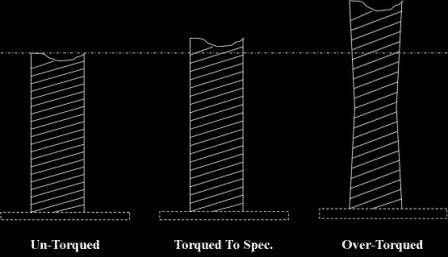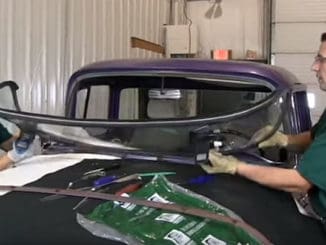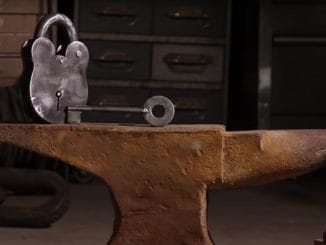
Torque specifications for components (especially engine components) are not to be taken lightly.
Fastener torque requirements are also changing as nuts and bolts are becoming more and more vehicle-specific — there is no more running to the parts bin for a quick replacement.
Why Fastener Torque is Important
There are productivity penalties for not properly tightening and torquing a fastener using the correct tools or procedures.
For example, if an oil pan drain begins to leak or a control arm stud snaps, it could cost you your life, or in the case of a shop, expose you to a lawsuit or lead to an increase your shop’s insurance premiums, and possibly leaving you with a social media PR nightmare.
The basic physics of all threaded fasteners are the same. When a threaded fastener is tightened, it stretches. Since metal is elastic, a clamping load is generated.
The friction between the threads, shoulders, and even the washers creates additional clamping loads and friction to ensure it does not turn and loosen. These loads are generated by the torque from a technician’s tools.
How much the fastener stretches is dependent on how much torque is applied.
If too little torque is applied, the fastener will not generate enough clamping load and the assembly may come apart.
If too much torque is applied, the fastener may snap or become elongated to the point where the geometry of the threads changes and it won’t stay torqued.

Your Torque Wrench
Chances are you have a torque wrench or two in your toolbox. It probably resides in the plastic case with the warranty certificate. Ask yourself, do you trust your torque wrench(es)?
In a shop setting, your torque wrench could have been borrowed and returned to its case without being wound down to the lowest setting. Not winding down the wrench to the lowest scale before storing it leaves the mainspring compressed. This can weaken the spring and cause false readings. In addition, going to zero or past zero can affect the calibration of the wrench.
Another common problem occurs when the torque wrench is dropped on the ground. Impact with a concrete floor can damage the internal mechanisms of the wrench. While one fall from a workbench may not damage the accuracy, repeated blows can cause a calibration problem.
So, how do you determine if your torque wrench is accurate? Some tool trucks have a torque wrench tester that can help spot a torque wrench that is malfunctioning or inaccurate. You need to test at several torque settings, including the highest and lowest settings.
It is not uncommon to find a wrench that will be accurate at 50 ft./lbs., but significantly inaccurate at 25 or 150 ft./lbs. If the accuracy is off, you should send it out to be calibrated. While annual calibration service is recommended by most torque wrench manufacturers, in a home garage environment, try testing against a friend’s tool.
If you have “community property” torque wrenches at your shop, or you borrowed your buddy’s wrench from down the street, verification and/or calibration on a more frequent basis is recommended.
It is critical that the wrench be calibrated by a service provider that is accredited by a testing laboratory, and that you are provided with documentation on the accuracy of the torque wrench. This can help to cover your liability if a wheel comes off a vehicle or an oil drain plug falls out.




